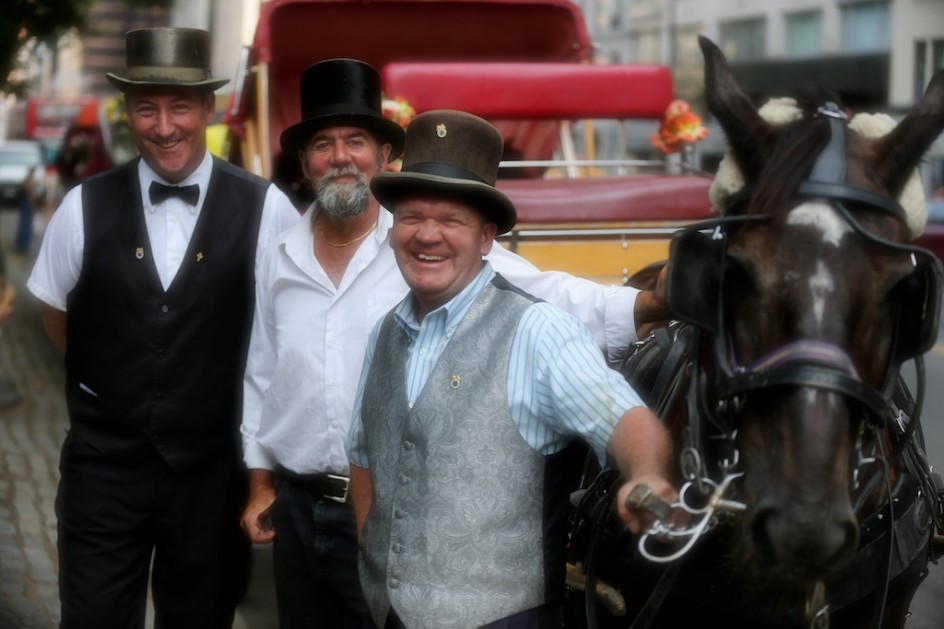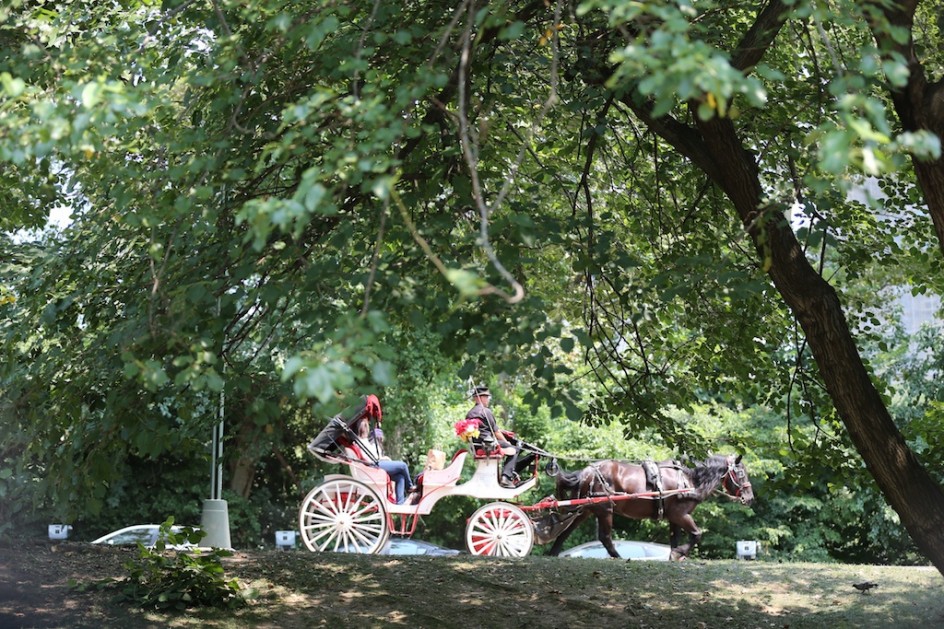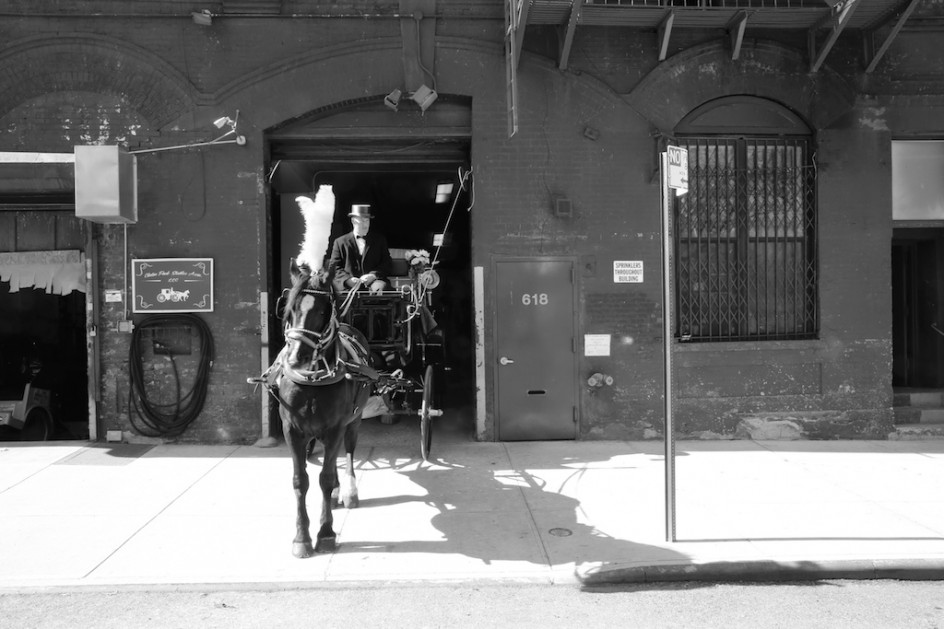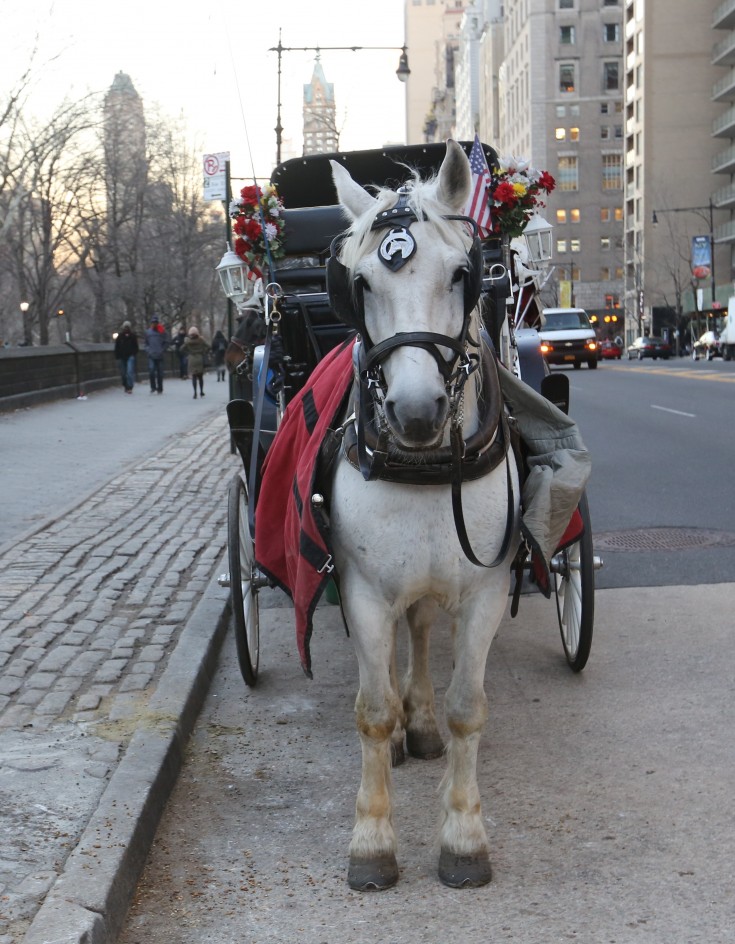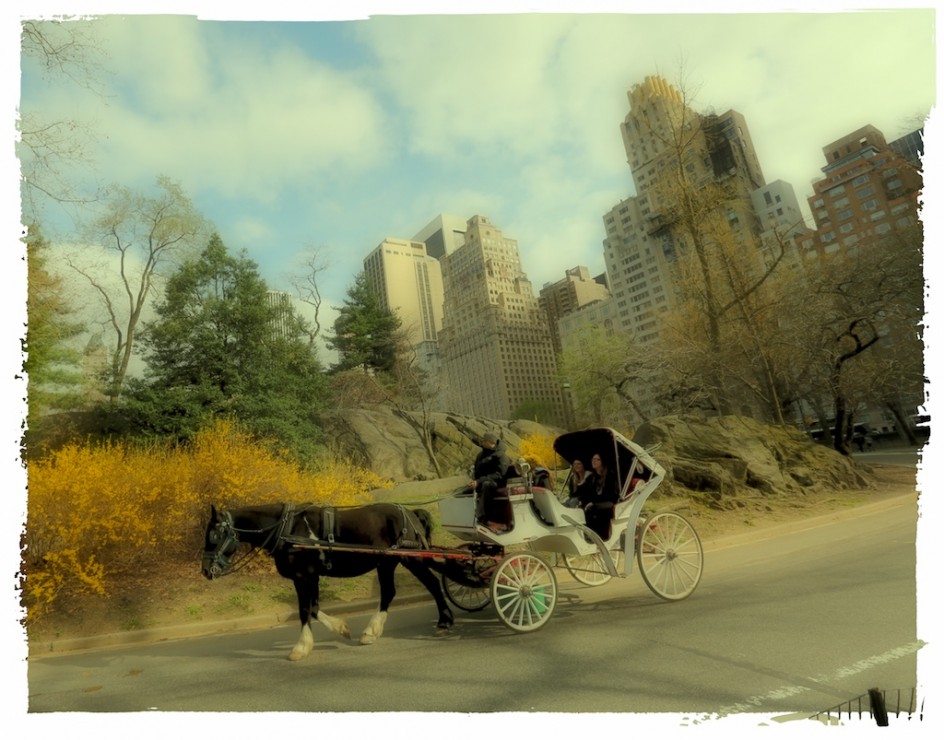
I received many messages about the carriage horses this week, three touched me, I want to share them. They are important.
Marsha Himler is the President of the New York State Horse Council , she wrote me yesterday to thank me for writing about the carriage horses. I had written that the controversy had become a campaign of rage and would continue in one form or another, but that the people in the carriage trade have nonetheless won a great victory, support for them is growing every day.
“I do not feel this fight is over, unfortunately,” Himler wrote. “The ‘campaign of rage’ as you so rightly termed it, by the animal rights activists, will go on and so the good people who own the carriage horses will probably never have the luxury to completely relax and go about conducting their business as those of us who work in less public occupations do.”
__
Pamela Rickenbach is the very peace-loving co-manager of the Blue-Star Equiculture farm, a rescue home, retirement farm, organic farming center and educational center for working and draft horses. She wrote a column – “Sense And Sensibility For Our Own Kind” – on her Facebook page, it was a wrenching chronicle of fury and cruelty:
“Have you ever been absolutely hated by an animal rights activist? I mean HATED so much that they wish to obliterate your very existence. HATED so much that they vow to destroy you and your kind no matter what it costs, monetarily or in decency? HATED so much that your very humaneness and your families identity and legacy and traditions and whatever else you hold sacred and dear are threatened with a campaign to destroy any trace of your existence? What is it about this kind of activism done in the name of loving animals, that loathes humankind to the point of what appears to be utter insanity?”
___
Lena Pilarski is a 22-year-old college student and mother of two girls from the Midwest, she loves horses and hopes one day to own a herd of Gypsies and Shires. Night after night she dreams the same dream. “it’s the image of carriage, wagon, plough and cart horses from around the country flooding into New York City, bringing the flow of cars in the streets to a halt as they take them over.” In her dream, she sees a huge line of carts and horses lined up before the mayor’s office. The crowd of horses and people are so overwhelming that the protesters who gather to shout their chants are drowned out.
Lena hears the horse’s voices in the night, they are talking to her, she imagines in her dream that the mayor, sitting in his office, feels the pressure of the horses and the many animal lovers watching. “Will he still insist on this unfounded prejudice?,” she wonders, “or will he finally do what is right and visit these people, the stables, the horses, and see for himself that the animals are happy and give up this ridiculous pursuit?”
__
I am happy to share these voices. They are very human, in such stark contrast to the angry voices standing behind microphones, screaming cruel taunts in the streets to feed the ravenous cameras and enraged blogs.
I know these voices will never be heard in the jarring din that is the New York carriage horse controversy. Reporters will never ask them their opinion, nobody would attend their press conferences, their messages are all powerful and yet said in different ways.
And we know that the mayor – he describes himself as a progressive – will hide from them, he will never talk to them or listen to what they have to say. When one of the gentlest and quietest of the carriage drivers approached the mayor with his young son at a public event earlier this year and asked him why he was pursuing the horse ban so relentlessly, the mayor said “because your work is immoral,” turned his back and walked away.
Martha Himler gently reminds us that the people in the carriage trade have had their right to safe and free lives taken from them, they will almost certainly never have the luxury granted to free people everywhere to feel safe, to feel peaceful, to conduct their business as free people everywhere assume they have the right to do. They have become targets for rage, they will be hounded, shouted at, insulted, dehumanized, and live in fear of the kind of mistake or accident that happens every day to all kinds of people, but that can never happen to them or their horses.
That is an awful price to pay for doing honest work in a law-abiding and conscientious way.
Pamela Rickenbach’s message is a wrenching plea, she reminds us that hatred is a form of violence, a kind of abuse, a battering of the soul and of the spirit. George Orwell wrote that all issues are political issues, and politics itself is a mass of lies, evasions, folly, hatred and schizophrenia.
I would once have thought such a statement harsh and cynical, but it is the story of the carriage horse controversy, the cancerous swirl in which the drivers and horses must live. Pamela Rickenbach’s message reminds us of how much hatred can hurt, how abusive it can be. These people must never get to speak for the rights of animals as they trample on the rights of people.
And then, Lena, a young and innocent voice. How very sad that she must dream of a world in which a mayor actually listens to the people he is supposed to serve, and who have elected him to public office. This is how the real world of democracy is supposed to work. The carriage drivers are citizen’s of the city also, as are the people who claim to support animal rights. The stable owners and drivers are the new refugees a broken system, betrayed every day by a broken promise – the right to life, liberty and the pursuit of happiness.
The philosopher Liu Xiaobo wrote that hatred is corrosive of a person’s wisdom and conscience. The mentality of hatred, he wrote, can poison a community’s spirit, spark brutality, destroy a society’s tolerance and humanity, and block our progress to freedom and democracy.
Hatred hurts, even kills, you can ask the carriage trade people, their messages are perhaps the most powerful of all. Theirs are the voices I hear every day.
“The families, many of whom I would call very close friends at this point, are ordinary folks,” wrote Rickenbach in her essay, “trying to care for their families, their horses, their business. I have seen the depression and sadness and extreme stress in their faces. A couple have died of heart attacks, one was one of the sweetest most loving human beings I have ever met, creative and funny and determined to help show the world the beauty of his love for his horses and city.”
__
So hate, I think, is really the message of Marsha Himler, Pamela Rickenbach, Lena Pilarski. Their messages are not cruel and angry, they are calling to us, as the horses are, to remember what it means to be human beings living together in community.
Their story is, in fact, about hatred, cruelty and abuse. But the horses are not the ones in need of rescue. We are.
I thank Marsha, Pamela, and Lena for writing me, I am proud to receive and share their very powerful messages. They all wrote me to thank me for my writing, they are all far more eloquent than I will ever be.

